The Frisco Schoolhouse
Introduction
Text-to-speech Audio
The Frisco Schoolhouse was built in 1899, by Oliver Swanson. Its original purpose was to serve as a saloon, but never opened as one. The Summit County school district purchased the newly constructed building and opened it as a school in 1901. The Frisco Schoolhouse remained in operation until 1963, when it was turned into administration and storage space. By 1980, the Schoolhouse was in danger of being torn down, and the citizens of Frisco rallied and restored the Schoolhouse as part of the creation of the Frisco Historic Park & Museum. The Schoolhouse is now listed on the National Register for Historic Places and serves as the primary exhibit space for the Frisco Historic Park & Museum. This building continues its role in education while serving more than 35,000 guests a year.
Images
The Frisco Schoolhouse with Miss Lynch, teacher, and a group of 15 children. Note the telephone poles and the Victorian era cupola. Circa 1910
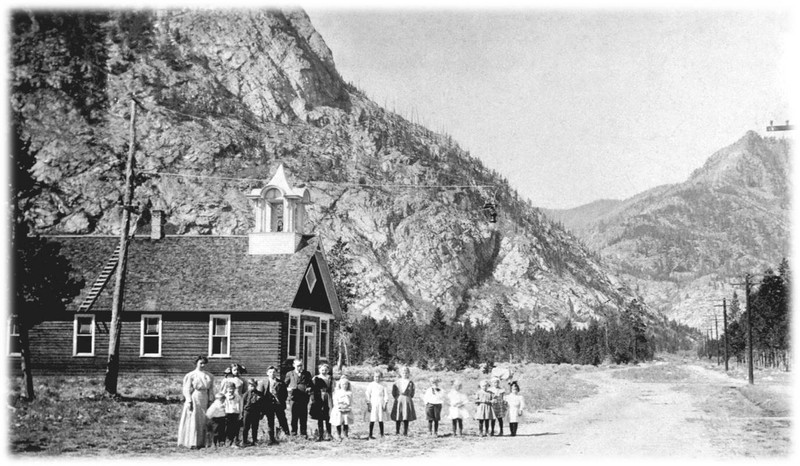
The Frisco Schoolhouse, circa 1956. Note the flag pole and the balcony above the front doors.
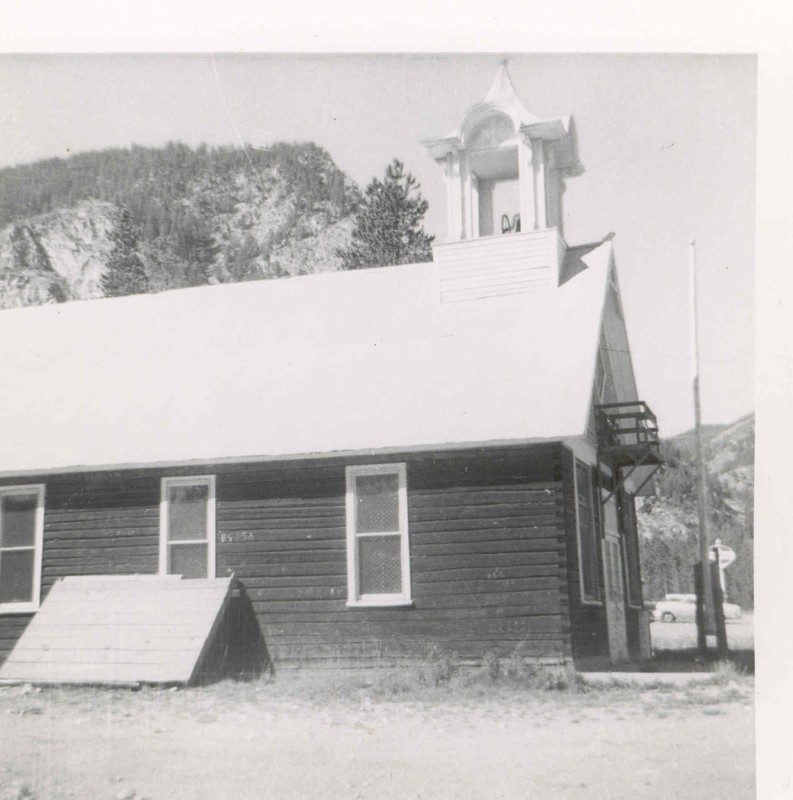
Teacher Alfred Boyd and his mother, at the rear of the schoolhouse, cicra 1956. Boyd lived in the second floor of the Schoolhouse.
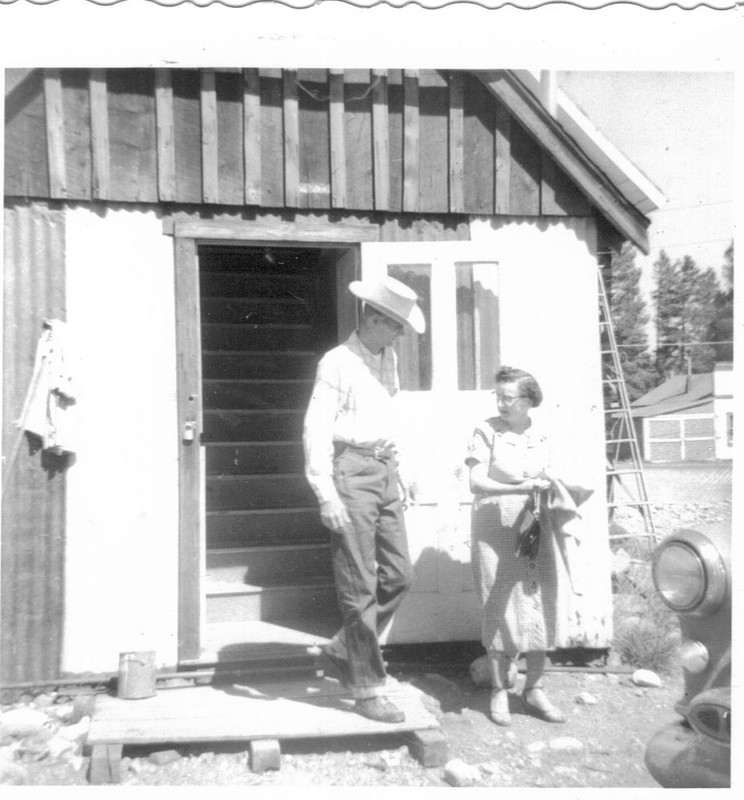
This undated photo shows the extension on the rear of the school and the second entrance on the side, which were installed in the late 1950s. The small balcony on the front of the building was intended as a fire escape from the second floor attic.
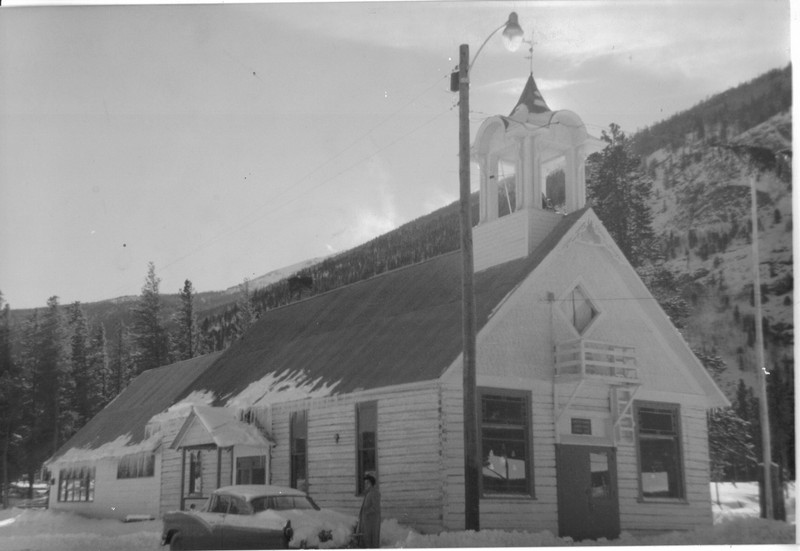
The restoration of the Schoolhouse, cicrca 1983. Note the empty cupola.
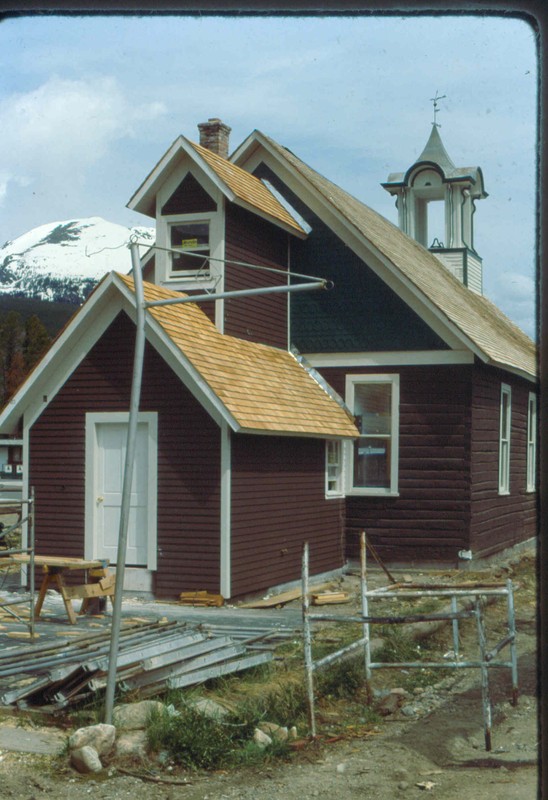
The Frisco Schoolhouse on the corner of Main Street and Second Avenue. The schoolhouse is the center piece of the Frisco Historic Park & Museum and is listed on the National Register of Historic Places.
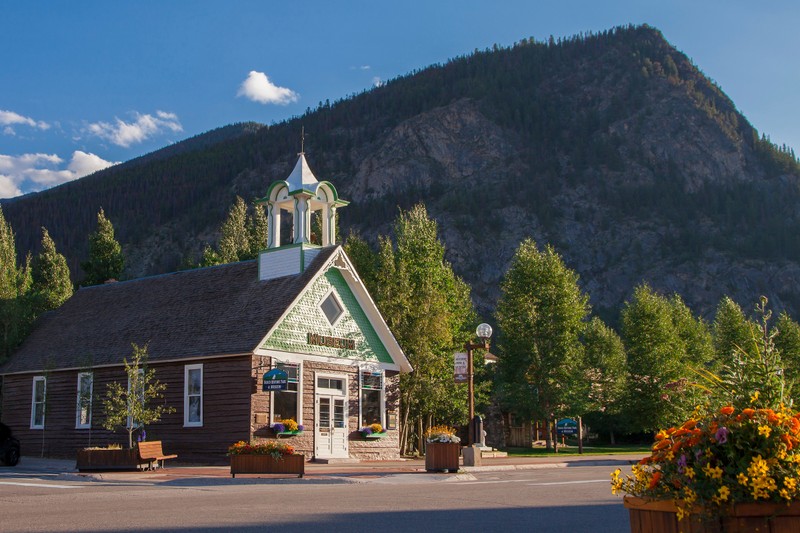
This concept drawing dates to the mid-1980s, as the park was just beginning to develop. One of the biggest differences is the grass covered, open area surrounding the gazebo. Today the Historic Park hosts ten historic cabins and buildings along with an outhouse, a spring house, and the open-air gazebo.
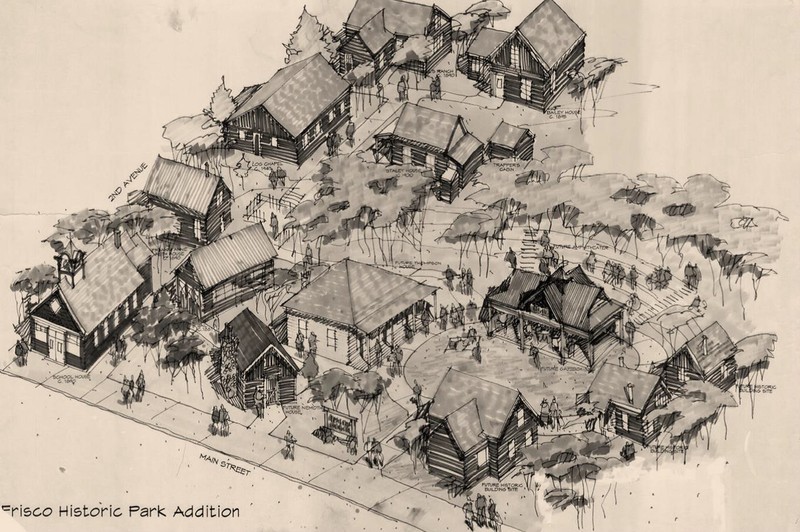
Backstory and Context
Text-to-speech Audio
The late 1890s and early 1900s saw a second revival in the Summit County mining industry. This was due to the removal of the Silver Purchase Act in 1893 and the subsequent silver crash. Investors on the East Coast poured money into the local mines with hopes that one of them would turn a profit. Some of these mines did so, drawing more people and businesses to the area. Frisco was situated as a way-stop halfway between Georgetown and Leadville, with two railway lines running through town into the Tenmile Canyon. The Denver Rio Grande ran down the current alley between Main Street and Galena Street, while the Denver South Park & Pacific ran along the current recreational path at the base of Mount Royal. With several hotels, shops, saloons, and a newly built town hall, Frisco was set for success. As population grew, so did the call for a new, larger school building.
Oliver Swanson had begun mining in the Tenmile Canyon during the beginnings of Frisco. His luck never struck rich, leading him to sell his mines and build a saloon at the edge of town, close to the mouth of the Tenmile Canyon. He sold the building in October, 1901, to Simon Schloss of Lake City, Colorado. That same month, Frisco citizens approved a bond to build a new schoolhouse. By November, the school district had purchased the building from Schloss for $1,500. The beautiful white cupola on the top of the Schoolhouse was designed by Victorian architect Elias Nashold, in 1882. The cupola and the bell were moved here from an old four-room schoolhouse in Breckenridge in 1884.
The decline of the Frisco mining industry in the late 1910s to 1920s also meant a slow decline in population. Frisco's electricity and phone services were turned off, and the railroads began to pull up their tracks. By 1930, the town population dropped to 18 people, but a small group of citizens, including the Thomas family and their dairy farm known as Bill's Ranch, kept the town going. People began to return to Frisco over the next few decades as large-scale construction projects began at the Loveland Pass, the Dillon Reservoir, and the Eisenhower-Johnson Tunnels. The emergence of local ski resorts also began to pull people back into the area. The schoolhouse continued to hold classes until 1963, when population growth and economic revival created new school buildings with modern amenities. Today, the Summit School District has nine school buildings for elementary, middle, and high school.
The Schoolhouse bell was once the center of much controversy. While the schoolhouse was undergoing some renovations in the summer of 1975, scaffolding lined the sides of the building. On August 11, 1975, School Superintendent James Beck was sitting across the street eating breakfast when he noticed the empty bell tower. A full investigation was done, but the 350-pound bell was nowhere to be found. Twelve years later, new Breckenridge homeowners, Jeff and Gail Stephens, found a large bell half-buried in their yard. They moved it inside and even briefly used it as a wood bin. A friend mentioned the stolen Frisco bell to the couple who then contacted the Frisco Police Department. Luckily, just prior to the bell disappearing, Reverend Fiester had documented the engravings on the bell. Using his notes, Fiester was able to match the engravings and verify the bell was indeed the Frisco bell. The bell was restored to the tower and it rang out on Christmas Eve, 1988.
Cite This Entry
Admin, Clio and Rose Gorrell. "The Frisco Schoolhouse." Clio: Your Guide to History. October 11, 2022. Accessed August 16, 2025. https://theclio.com/entry/112429/tour/1
Sources
Doggett, Suzanne, Holly Wilson, "Rural School Buildings in Colorado," National Register of Historic Places Nomination Form. Washington, DC: U.S. Department of the Interior, National Park Service, March 1999.
Gilliland, Mary Ellen. Summit: A Gold Rush history of Summit County, Colorado. Edition Fifth. Silverthorne, Colorado. Alpenrose Press, 2006.
La Barr, Mr. C. M. Interview with Caitlin Lewis. Frisco Historic Park & Museum. April, 2, 2011.
Mather, Sandra F. Images of America Frisco and the Ten Mile Canyon. Charleston, South Carolina. Arcadia Publishing, 2011.
Mather, Sandra F. Images of America Summit County. Charleston, South Carolina. Arcadia Publishing, 2008.
Queen, Jack . "At 117 years old, Frisco's schoolhouse bell has been through a lot, including a kidnapping." Summit Daily (Frisco) June 24th 2017. Online ed, Online sec.
The Story of Frisco, Colorado. Nixon, Tim . Performed by Dr. Sandra F. Mather, Ph.D.. United States. Baughan Productions, 2017. https://youtu.be/Bz5s-0hXrXI.
Denver Public Library, Western History and Genealogy Department, X-8560
Frisco Historic Park & Museum Collection
Frisco Historic Park & Museum Collection
Frisco Historic Park & Museum
Frisco Historic Park & Museum
Photo courtesy of Todd Powell
Frisco Historic Park & Museum

